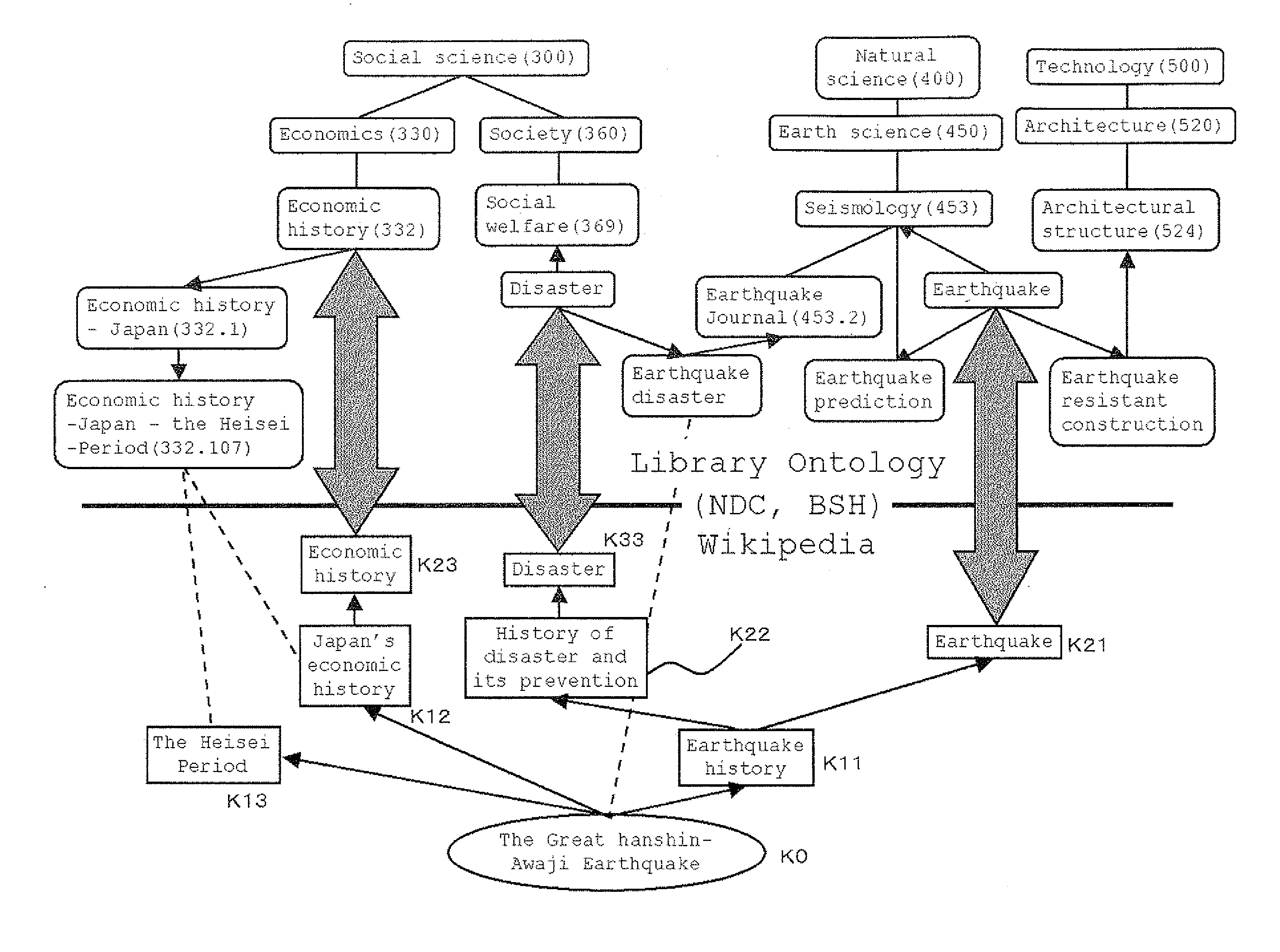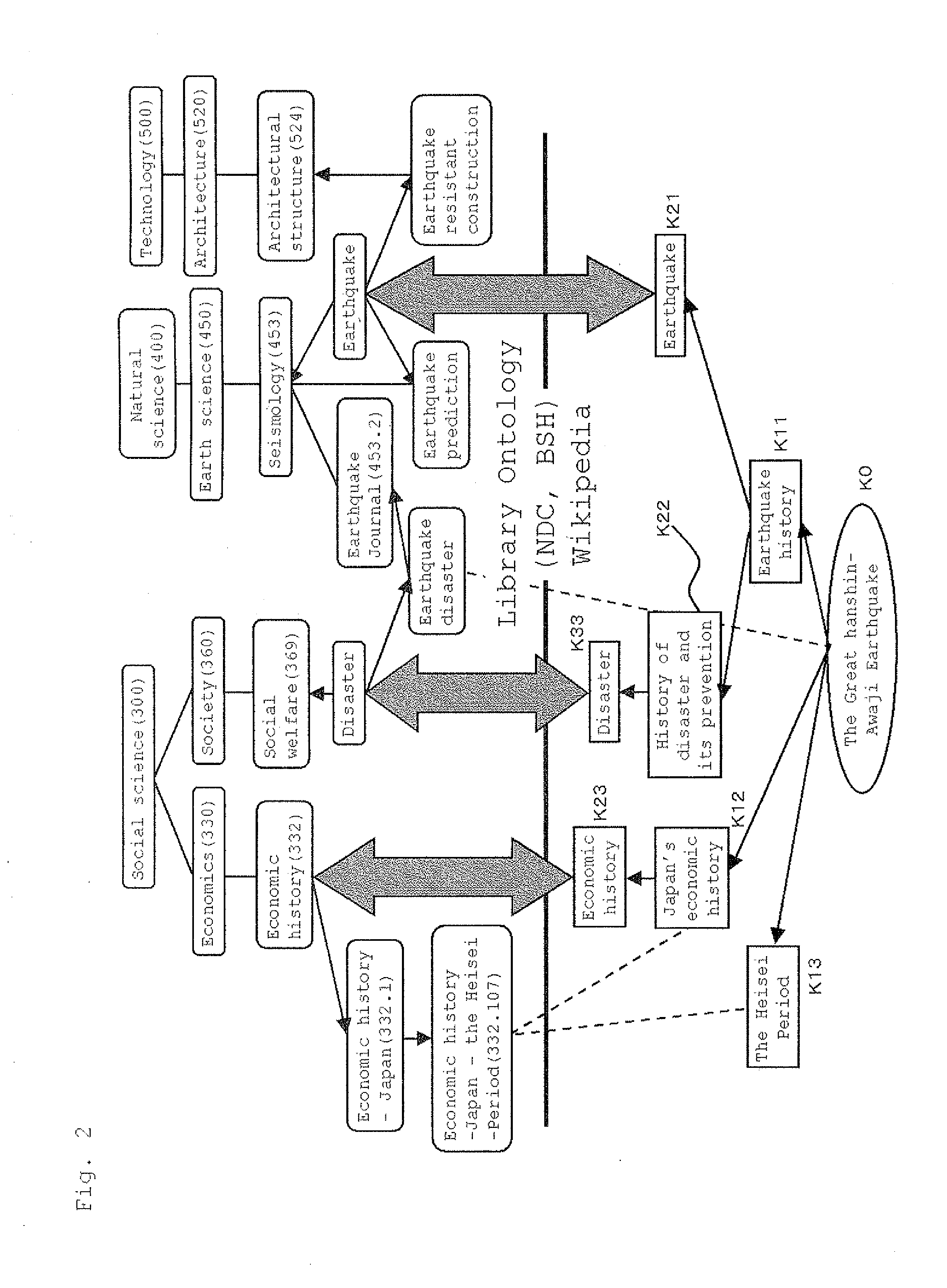Information search system, method, and program, and information search service providing method
a technology of information search and service, applied in the field of information search system, method and program, and information search service providing method, can solve the problems of unfit users, unsatisfactory interviews, and limited service hours, and achieve the effect of convenient utilization and high accuracy
- Summary
- Abstract
- Description
- Claims
- Application Information
AI Technical Summary
Problems solved by technology
Method used
Image
Examples
Embodiment Construction
[0248]Hereinafter, a preferred embodiment of the present invention will be described with reference to the drawings.
1. AT FIRST
[0249]In the embodiment of the present invention, there is proposed a new information search system and information search method combining two kinds of ontologies: Wikipedia and a library classification.
[0250]First, simple descriptions will be made with respect to a library classification and the Web ontology (including Wikipedia) which are the background of the present invention.
[0251]1-1. Shelf Classification
[0252]NDC (Nihon Decimal Classification) is the most popular shelf classification for library materials in Japan. One NDC code is affixed to one material. There are various other shelf classifications known as, for example,
[0253]DDC (Dewey Decimal Classification)
[0254]UDC (Universal Decimal Classification)
[0255]NDLC (National Diet Library Classification)
[0256]LCC (Library of Congress Classification)
[0257]1-2. Subject Headings
[0258]BSH (Basic Subject H...
PUM
 Login to View More
Login to View More Abstract
Description
Claims
Application Information
 Login to View More
Login to View More - R&D
- Intellectual Property
- Life Sciences
- Materials
- Tech Scout
- Unparalleled Data Quality
- Higher Quality Content
- 60% Fewer Hallucinations
Browse by: Latest US Patents, China's latest patents, Technical Efficacy Thesaurus, Application Domain, Technology Topic, Popular Technical Reports.
© 2025 PatSnap. All rights reserved.Legal|Privacy policy|Modern Slavery Act Transparency Statement|Sitemap|About US| Contact US: help@patsnap.com



